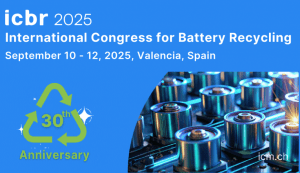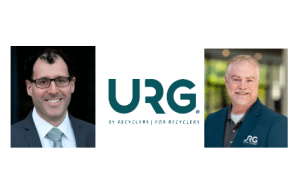Detroit, Michigan — May 30, 2011 — Last year’s oil spill in the Gulf of Mexico was one of the worst environmental disasters in history. Fortunately, some creative minds at General Motors have found a way to use their recycling know-how to lessen the spill’s environment impact. GM reported that it is still recycling almost a quarter of a million pounds of oil-soaked booms from the Gulf of Mexico and other waste materials into plastic components for the Chevrolet Volt.
“GM decided to offer assistance by collecting boom material from the Gulf coast until there was no longer a need,” said John Bradburn, GM’s manager of waste-reduction efforts. “We’re in the process of identifying other areas where the material we have left can be used – potentially in our plants – now that we have a sufficient quantity for the Volt.”
Oil-soaked booms from the Gulf of Mexico are providing enough recycled material to make a production year’s worth of air-deflecting baffles for the Chevrolet Volt.
GM and its partners, including Heritage Environmental, Mobile Fluid Recovery, and GDC, re-used the booms while also refining out their oil content for energy purposes. In addition, GM says it was able to:
• Re-use 227 miles of the absorbent boom material
• Save 29,000 gallons of water and oil from the nation’s landfills
• Eliminate 212,500 pounds of waste from being thrown out
• Eliminate 149 tons of CO2-equivalent emissions from entering the air
The air deflectors are made up of equal parts of recycled materials, the compay says. These are: 25 per cent boom material, 25 per cent recycled tires from GM’s Milford Proving Ground facility, 25 per cent waste plastic packaging from its Fort Wayne assembly plant, and 25 per cent post-consumer plastics and other polymers from a variety of sources.
Before GM began the project, the only options for the contaminated boom material were disposing of it in a landfill or burning it for energy, the company says. While energy conversion was preferable to waiting hundreds of years for the material to decompose, both options end the life of a material that, if recycled, could live indefinitely.
“We applaud GM for moving beyond traditional corporate responsibility efforts and finding a way to turn a portion of the waste from one of the worst environmental challenges in our nation’s history into something valuable,” said Corey Lambrecht, president of Earth911, host of the nation’s largest recycling directory. “We need more, creative cleanup and recycling efforts like these.”
GM says in 2010 its facilities around the world recycled 92 per cent of the waste they generated. It uses recycled and bio-based materials such as plastic bottles, blue jeans, cardboard, carpet, tires, kenaf fibers, balsa wood and soy in its vehicles.
“We use recycled and bio-based materials whenever possible,” Bradburn said. “Fortunately, we were able to leverage what we know to aid in the Gulf cleanup efforts, produce a high-quality part for a brand-new vehicle and keep the boom material in its use phase all in a cost-neutral way.”


























